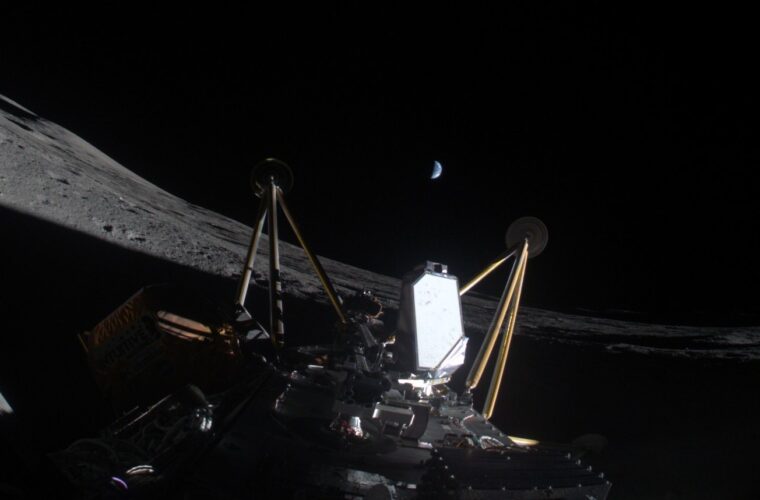Social media and private partnership: inside the changes at India’s space agency
By Nivedita Bhattacharjee
BENGALURU (Reuters) – When the Indian Space Research Organization’s (ISRO) Chandrayaan-3 mission landed on the moon, more than 8 million people tuned in for the event’s YouTube live-stream – a record for the site.
The landing was a win for India’s low-cost space engineering, and science, as well as a quiet initiative to rebrand India’s 54-year-old space agency as approachable, according to more than a dozen current and former employees, and 10 consultants and industry experts.
“ISRO used to be a very closed organization. There was hesitation in talking about its missions and somewhat of a culture of secrecy,” said Namrata Goswami, a space policy expert and professor at the Thunderbird School of Global Management at Arizona State University. “Fast forward to 2023, I was surprised by the amount of transparency from them. That is very new, and very welcome.”
The stakes are high: the $400 billion global commercial space market is expected to be worth $1 trillion by 2030, but at the moment India has only a 2% share – about $8 billion – which the government wants to change. India expects to have a $40 billion worth of slice of the pie by 2040, the government has said.
Prime Minister Narendra Modi has called on the agency to make India into a profitable space superpower. To get there, the country needs to rope in young scientists, startups, investors, and private industry partners, none of whom respond well to a closed-off approach, senior ISRO scientists said.

“The point is to be open and engage the next generation,” said BHM Darukesha 49, who drafts and manages ISRO’s social media posts. “We want people to see us as friendly. … This represents a new focus at ISRO.”
That has caught the attention of university students who might otherwise have steered clear of the industry. Sruthi Parupudi, 18, who is studying interaction design in the western Indian city of Ahmedabad, said she had long been interested in space, but thought such careers were closed off to non-scientists.
“Now I see the many facets of the industry open up,” she said. “I stand a chance to work with ISRO, being a design student.”
ISRO insiders credit S. Somanath, who took over as chairman in 2022, as being instrumental in getting everyone at the organisation onboard with the changes. Many scientists initially worried about job security and ISRO’s relevance after opening the sector to private industry, said seven senior scientists, who did not wish to be named because they are not authorised to talk to media.
Somanath said he implemented other small changes, such as encouraging break time, informal problem-solving chats and refreshment kiosks where employees can meet for tea. His goal was to make it all add up to a more attractive place to work and partner with.
“These small things that global companies have are not automatically available in government organisations all the time, and these are important for young people, whom we want to attract as we expand our reach,” Somanath said. “Many ideas can be discussed better over a cup of tea.”
Employees and experts say that they have felt more autonomy, and that a new atmosphere of straight talk helps projects move faster. Publicising ISRO scientists’ achievements has given them more confidence and brought space startups to the door, asking for guidance as they plan private launches.
A more responsive agency makes such partnerships more attractive, private space insiders say.
“Private industry does not need help, they need predictability,” said D S Govindrajan, president of Aniara Communications, which provides satellite services for emerging markets. “That kind of predictability is certainly there now.”
ABOVE AND BEYOND
From its humble beginnings – stories of scientists’ using a church as a “mission control room” for the agency’s first launch and transporting rocket parts by bicycle are legendary in the country – ISRO has hit recent highs, becoming the first nation to land a rover on the moon’s south pole.
It has now set sights on studying the sun, putting astronauts in orbit, exploring Venus, and is a partner with NASA for planetary defence and deep space exploration.
“Space is a critical place through which you ascertain yourself as a superpower. The U.S. is there, China is there, so India has to be there,” said Ashok Sharma, visiting fellow at the University of New South Wales, Canberra at the Australian Defence Force Academy.
Modi’s government, heading for elections next year, is pushing the development of India’s space industry. Insiders say he has shown a personal interest in inviting foreign investment in the sector.
“He wants space to do what India has been able to do with IT,” a person familiar with discussions between the prime minister’s office and the industry said. The person declined to be named because the discussions are not public.
The government is widely expected to open the doors to foreign investment in the sector this year. ISRO will focus on exploration and new science, while three different bodies – the Indian National Space Promotion and Authorisation Centre (IN-SPACe), NewSpace India Limited (NSIL) and the Indian Space Association (ISpA) – will interact the private sector, negotiate launches and boost business.
There are many obstacles: space launches are dominated by established companies and organisations, and a costly failure or economic downturn could undo the momentum.
“You are using public money, so you have to show the public what the money is being used for,” said Somak Raychaudhury, an astrophysicist and vice chancellor at Ashoka University.
But for now, the increased openness has led to optimism that the positive changes will be long-lived.
“People can now see scientists are normal human beings, and in some ways, maybe that can inspire young minds to study science further,” Raychaudhury said.



